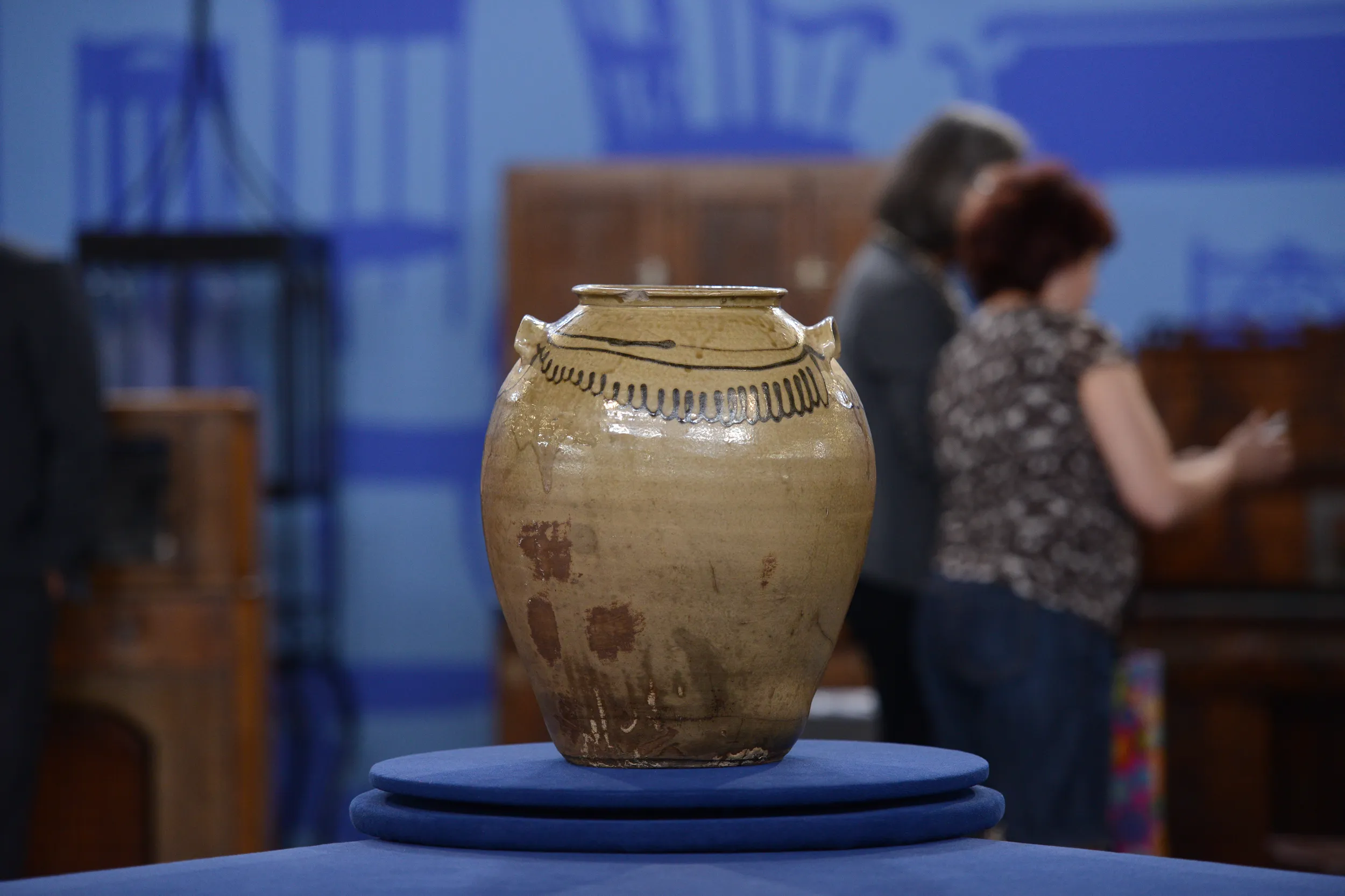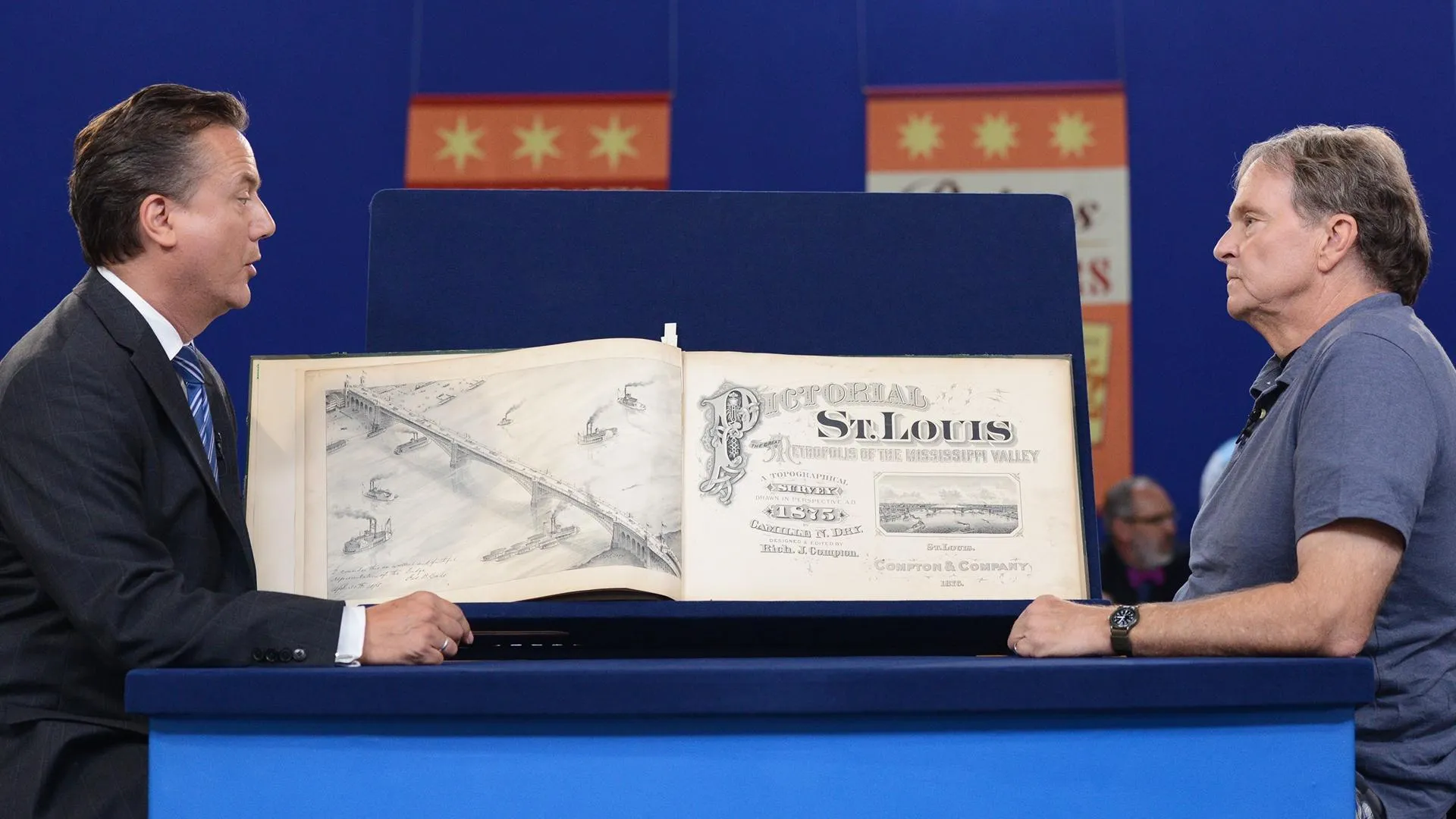GUEST: It was given to us by my partner's mother, who got it from her mother. Their family is from South Carolina. They have a family farm somewhere around Laurens, South Carolina. We got the piece about 15 years ago. Probably five years ago, I was looking at a brochure that the Museum of Fine Arts at Houston put out, and we saw a picture of a pot that looked very similar. So I began to wonder whether this was the same maker. The brochure talked about a man by the name of Dave Drake from California, a former slave.
APPRAISER: You thought it might be a piece of Dave Drake pottery. Dave Drake was an enslaved African American who was working in the Edgefield District of South Carolina, making pottery for about 30 years, and really even after the Civil War. You're close.
GUEST: Mm-hmm.
APPRAISER: It's not Dave Drake's work, but it is from the Edgefield District of South Carolina, where there are a number of important potteries. This piece was probably made by one of the most famous Edgefield potters, a guy named Thomas Chandler. Chandler was trained in Baltimore and moved to Edgefield in the 1830s and was active working for various potters until about 1850, when he branched out on his own. He ran his own pottery for a few years and died in 1854. Much of Chandler's stoneware is actually stamped "Thomas Chandler," and there is no stamping on this piece. So it may have been made when Chandler was working for another pottery, before he branched out on his own.
GUEST: My partner says that her mother says they used to churn butter in it. Is that what these kind of things would be used for?
APPRAISER: I don't think it was a butter churn, but it's a storage jar and it could have been used to store many things in. It probably wasn't used to store liquid in, because if it were a liquid storage jar, you wouldn't expect to see this big opening at the top. You'd want something that would not lead to the evaporation of the contents. It's a great example of Edgefield pottery. It has this distinctive sort of runny, drippy glaze called alkaline glaze. It has this underglaze decoration here, which was done with a slip cup-- in other words, a little cup was used to drip the glaze on here. The thing that's really remarkable about it is its monumental size. This is a big...
GUEST: Yeah.
APPRAISER: piece of Chandler pottery. Back here you can see all the great characteristics of Southern alkaline-glazed pottery, where the glaze is really dripping down. It does have some condition issues. You can see a fairly big crow's foot here. There is a hairline across here.
GUEST: Mm-hmm.
APPRAISER: By the way, all this discoloration, that's from the firing process. It really has nothing to do with any damage to it.
GUEST: And this bulge as well?
APPRAISER: The bulge you see there is not from the firing process. It's from when it was being made. You have a lot of weight that's resting on this relatively small base, and so it bulged a little bit. But overall, this is a fantastic example of Chandler pottery. And all of these condition issues, to a stoneware collector, these are sort of the normal things that happen in the life of a great piece of pottery. For something that was probably made sometime in the 1840s, it's in pretty doggone good shape.
GUEST: Aside from the swirls that you talked about, what are the classic Chandler...?
APPRAISER: It's the decoration and the form.
GUEST: And the form.
APPRAISER: If you were to go into a good shop in South Carolina or anywhere in the South that dealt in stoneware, I would think a retail price for this piece would be somewhere between $8,000 and $10,000.
GUEST: Wow. Mm-hmm, wow, that's great. Yeah, I had no idea that it would be that much.












